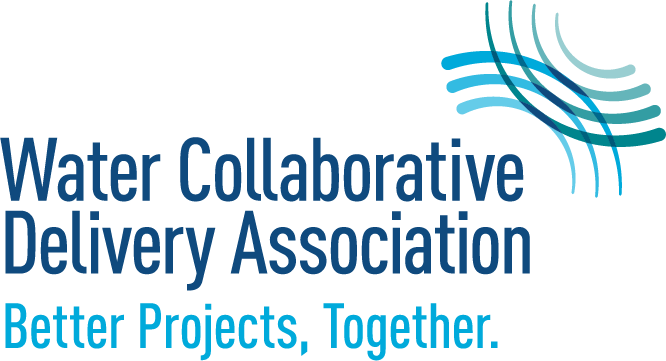In the weeks leading up to a partnering session, you are almost guaranteed to hear the usual quips: “It’s a joke. At least we get lunch. Can’t wait for the big group hug and then back to business as usual. We sing ‘Kumbaya,’ eat lunch, and nothing changes.” If this is the actual sentiment surrounding your partnering sessions, then something needs to change—partnering is not just about getting along. Proper partnering challenges the group, fosters dialogue, forms bonds, and should leave the project team ready to tackle the next big challenge. Having experienced both kumbaya partnering and productive partnering, I can say firsthand that with the right attitudes, an experienced facilitator, and intentional preparation, you, too, can make this a valuable collaborative delivery tool (and some Tex-Mex doesn’t hurt either).
Jumping back to the basics, partnering is a structured and collaborative approach to project delivery that involves all stakeholders working together toward common goals in an open and honest atmosphere. Stakeholders should always include the project owner, design team, contractor, and key subcontractors and suppliers. Depending on the nature of the project, there could be other stakeholders such as public utilities, regulators, and community organizations (who may participate at the beginning or certain meetings only). These key stakeholders meet quarterly or so throughout both Phase 1 preconstruction and Phase 2 construction, and it is key to meet as early as possible once firms are onboarded to set the stage for success. A facilitator experienced in guiding teams through partnering leads the group through the process.
The first one or two partnering meetings are dedicated to getting to know team members, discussing each stakeholder’s goals and priorities, creating a project charter, and determining the plan for future partnering meetings. These meetings are also a great opportunity to establish a communication matrix, review the risk register, and develop an issue escalation plan. Once expectations and goals are established, the following meetings review project updates, major issues, and assess how the team is performing against the charter and goals that were set previously. The assessment can be done using a scorecard process which is discussed below. Time should be allotted for an open floor or roundtable, where anyone can bring up positives (important!) and negatives about how the project is progressing and how the team is working together.
The partnering process is not a one-size-fits-all situation. There are different approaches, frameworks, activities, etc., and the facilitator should collaborate with stakeholder leadership to develop the right program for the specific project and people. That being said, here are a few critical aspects of partnering needed to ensure lasting success and avoid a kumbaya moment:
- Invite the right stakeholders. The project owner, designer, and contractor must be in attendance. The design-builder should send representatives from both the design and construction teams. This core group should consider which subcontractors and vendors should be invited—those with significant critical path scope, risk, and coordination needs. Consider any third parties like public utilities and citizen groups that will have a say in the project or will require close coordination. It may be appropriate to have a stakeholder attend certain meetings only, possibly the first and then periodically as issues call for it.
- Limit the number of attendees. A room full of people can lead to ineffective partnering. Each stakeholder should send its key decision-makers only, which are commonly the day-to-day project lead and an executive. Pressing issues should be reviewed ahead of time (see next bullet) and play into who attends from each stakeholder. The right level of decision-makers should be in attendance to resolve the project’s ongoing biggest issues. If appropriate, and if it will not impact the effectiveness of the partnering meeting, it can be worthwhile to send an up-and-coming leader to expose them to the partnering process.
- The facilitator should meet a week before the formal partnering meeting with the day-to-day leader from each key stakeholder (owner, designer, contractor) to discuss current project issues, hot buttons, and their goals for partnering. With this knowledge, the facilitator will have a better idea of what to expect from meeting participants and allows them to ensure there is sufficient time to discuss all pressing issues. This meeting can also help to temper emotions and ensure the partnering session focuses on solutions.
- Construction can and should be win-win, not zero-sum, especially in collaborative delivery. This message should be conveyed at every opportunity. With stakeholders working together to solve problems in the best interest of the project as a whole, each stakeholder’s project goals are more reachable, and the positive environment will enable a better team dynamic. Partnering sessions are the perfect time to stress this approach and address any issues that are not being resolved in a win-win fashion.
- Create a team charter to document all stakeholder goals. At the first partnering session, each stakeholder should discuss its goals for the project. The project team then groups all the goals into categories (such as safety, quality, plant operations), not separated by stakeholder. It will be easy to see that goals align across project roles. The charter should be printed in large format, signed by everyone in attendance, framed, and posted in a communal space (e.g., construction trailer, owner administration building). Don’t forget about the charter as the job progresses! It is helpful to review it and remind everyone of the team’s goals.
- Keep the conversation open, honest, and respectful (assume positive intent). This is especially critical if using a scorecard system. When using a scorecard, the project team develops a survey (usually at the first partnering meeting) based on the project goals and team charter. The survey is sent out to the entire project team, not only the partnering attendees, a few weeks ahead of each partnering meeting and is submitted anonymously, inclusive of any comments. The facilitator aggregates the data and comments and provides this information to the stakeholders at the partnering session to review and discuss. The key for an effective scorecard process is that comments must be provided for low scores (and for kudos). This enables discussion, problem-solving, and an opportunity for stakeholders to improve their team’s performance. At the same time, commentary should be provided in a respectful manner. Comments that may send stakeholders retreating to their corners or may inflame emotions should be modified by the facilitator before the meeting with the submitter (while maintaining anonymity in the group setting). The scorecard process is a great opportunity to improve the project experience for all. A problem not discussed will remain a problem.
- Find the right facilitator. This person should be able to effectively lead the meeting by fostering dialogue from the sidelines. The focus should be on the conversation between stakeholders, not the facilitator. At the same time, the facilitator needs to be able to interject if emotions flare or if problem-solving veers off course, including diving too deep into the weeds or into smaller issues best resolved in a different setting. There is much to discuss when partnering is done right, and the facilitator needs to keep the meeting moving while allotting time to the topics that need it. A facilitator I used to work with would start each meeting by saying that the agenda was only a suggestion—it was the participants’ meeting and time would be spent where needed.
- Money is not a dirty word. If there are budget issues, accounting issues, or any other problem that deals with money, bring it up.
- Record action items and assign a responsible person (not company) and due date. Review action items at each partnering meeting.
- It’s great to mix it up! Try to avoid sitting next to people from your organization. As mentioned above, partnering can take many forms. If it makes sense as part of the partnering program, head off-site for a memorable and interactive team-building activity.
On any project, and especially collaborative delivery projects, partnering should not be a “sing ‘Kumbaya’ and check the box meeting.” If your project team understands that ahead of time and knows to come ready to be honest and productive problem-solvers, you are well on your way toward effective partnering. Coming out of the first partnering meeting you will have a better understanding of the people and organizations you will be working with for the next few years, just as they will understand you. Throughout the project, proper partnering will ensure big issues are solved in the best interest of the project, there is an atmosphere of trust, and everyone is headed in the same direction.

